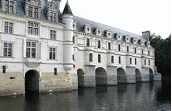|
The area for its wine production is around 3 percent of the total
area planted to vines in France and is strictly defined in accordance with the law and
there are 4 departments in the Champagne region, which are the Ardennes, Aube, Haute-Marne
and Marne.
All the kings of France that were crowned in Reims always had champagne flowing, even as
early as 898 AD and it was also used as a gift for any visiting monarchs to the area, such
as Mary Stuart who later became Mary Queen of Scots.
Because of this, from around the 12th century, champagne became increasingly popular
around the world and became the choice of drink for the rich and important when
celebrating events.
And so through the centuries, even up until today, champagne wines have always featured prominently on the wine lists at Royal marriages and even more people than ever
including the average person, will choose champagne when celebrating significant events,
such as births, marriages, even an 18th birthday.
Champagne has been adopted for almost every celebratory occasion, as you may well have
noticed with the likes of Formula One racing, right through to the Olympics and virtually
every other sport you can think of.
There are 3 main grapes grown in the Champagne region that include Chardonnay, which can
be found in the Cote des Blancs area, Pinot Noir, which is found mainly in the Aube area,
but also in Montagne and Reims, whilst the Vasllee de la Marne area is mainly comprised of
Pinot Meunier grapes.
With over 30,000 hectares of champagne vineyards, they stretch over rolling hillsides and
valleys, stretching as far as the eye can see, only interrupted by the pretty little
villages dotted around every so often that you will be able to experience while you are on
your holidays in France.
But with over 320 million bottles of champagne being sold in one year alone, which is also
increasing every year, the demand will eventually outstrip supply unless they decide to
change the law stating what areas and communes are allowed to produce the bubbly we have
all come to adore.
You see, at the moment, only specific grapes grown in a set area of around 34,000 hectares
can legally be defined as champagne according to an old French law and the Institut
National de l'Origine et de la Qualit? determines exactly how much each vineyard can
produce. But because of the growing demand, they are asking wineries to set aside
some of their yield when they have a good harvest, so that we, as the consumer, will never
have to go without.
Within the Champagne-Ardenne region, which is the
only area in the world that produces champagne, you will find that champagne is
incorporated whenever possible, whether it be accompanying the meal or even used in the
meal itself, as it has become a very important part of the region's culinary tradition.
So when you are on holiday in this wine region, you
will most certainly wish to visit one of the many champagne houses that conduct tours and
sampling sessions of some of their finest vintage champagnes.
|
|



